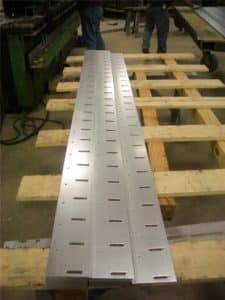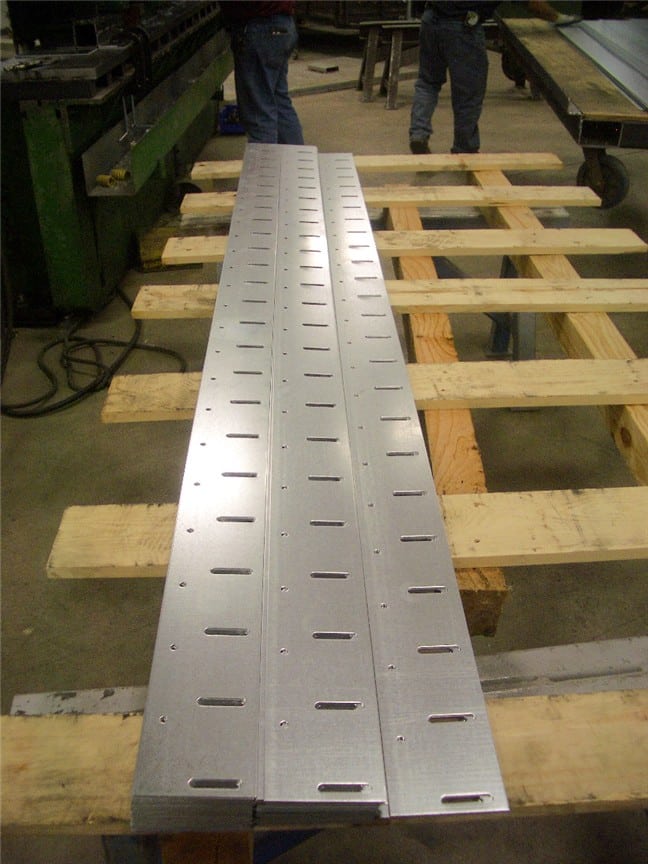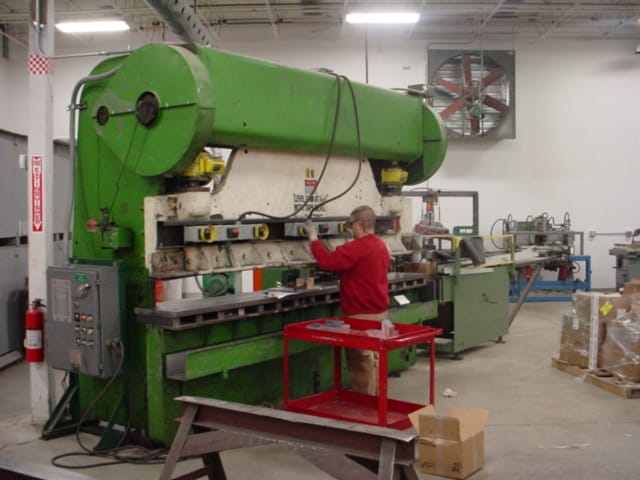Sheet Metal Punching
The “Hole” Story
Sheet metal punching is performed with a punch and a die. The punch and die come together and force a shearing operation in the shape of the punch. The sheet metal punch is the size of the hole to be punched, while the die is slightly larger. The difference in size between the punch and the die is called die clearance. This distance varies with part thickness, to allow the shearing action to take place, and also to reduce the amount of force it takes to punch. The thicker the part, the larger the clearance. Too little die clearance, and it is very hard to punch, and is also hard on the tool. Too much die clearance, and a burr forms on the hole.
Standard rule of thumb says that the minimum hole diameter you can punch in sheet metal is equal to the thickness of the sheet being punched. If you requirement is smaller than that for the hole, then you must resort to laser cutting or drilling processes.
We have an extensive selection of sheet metal punches. Shapes include rounds, slots (obround), squares, keyholes, etc. We can also emboss and countersink sheet products using punching methods.
Metal Strip Punching – Unitized Jig Punching
Unipunch jigging allows for medium size punching runs (100pc -25,000pc) with accuracy and speed. Strip punching can be done in one machine stroke, sometimes called gang punching. We have setups that punch 40+ holes in one hit! We have also made jigs for common punching applications for masonry or screw fasteners at 4″ , 8″, 12″, 15″, 24″, 32″ or 48″ centers. Max length of punch parts is 12′-0″. Maximum part thickness is dependent on many factors, but typically can be up to 1/4″ thick plate.
Unipunch jigging is ideal for strip metal subgirts that need to be attached to masonry walls, or base angles to be attached to concrete. Have you ever tried to drill through a metal sheet with a masonry bit? It does not work very well. Save the time of pre-drilling metal subgirts and have us punch them for you. Also, many attachment clips can be efficiently made using this method. We build jigs to punch plate, sheet, angles, structural sections, and extrusions. Jigs are made to strike as many holes as possible in a single hit, but sometimes jigs are built to strike the same part multiple times, as you can see in the video. This allows for tighter holes spacing, and smaller jigs with less punching units.
Ironworker Punching
Sheet metal punching via ironworker is a slow process. In fact, we only use this machine, in cases of very small lot sizes, or when a part is already welded together. Typically Ironworkers are used for thicknesses greater than 1/8″. This is because the stripping action of the punch coming out of thin materials, causes the sheet metal to deform.
Not only are ironworkers slow in regard to cycle time, they require a decent amount of setup. Each hole size requires a different punch and die set, that has to be carefully aligned and bolted into the machine. This process is time consuming in itself.
Another disadvantage to ironworkers is that they require a lot of tooling. Like unitized punches, you have to punch a specific punch as well as a specific die for each hole size, and each thickness of metal being punched. This tooling cost adds up quickly, and make it only economical in certain situations.
So is there a better alternative for holes than sheet metal punching?
Technology is rapidly changing in the sheet metal business. There are turret punches that greatly speed up the process, but again like in the case of the ironworker, tooling costs can soar. The tool of choice now is to simply laser cut holes. Although laser cutting isn’t cheap, it is worth it in the end when you consider setup, tooling costs, and production speeds. Check out our laser cutting page, or better yet contact us to see what is the best bet for your part.
Metal Strip Punching
Sheet Metal Punched Strips

H&H Metals
12520 Grant Drive #100
Thornton, CO 80241-2511
Phone/fax
Telephone: 303-429-4847
Fax: 303-429-0826
info@h-hmetals.com






